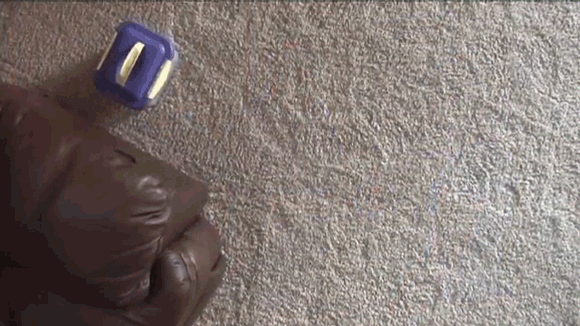Introduction:
What Does Flea Larvae Look Like? Welcome to our comprehensive guide on flea larvae, a crucial stage in the life cycle of these common household pests. Understanding what flea larvae look like is vital in effective pest control and maintaining a flea-free environment. In this article, we delve deep into the world of flea larvae, offering you a detailed description of their physical characteristics, habitats, and behavior. By equipping you with this knowledge, we aim to empower you to identify and manage flea infestations more effectively. …Click Here to Read more about Fleas!
Fleas not only cause nuisance; they also excel at surviving. The larval stage is a key part of their lifecycle, often overlooked but critical in understanding how to combat them. Here, we explore every aspect of flea larvae, from their size and shape to their preferred environments. Whether you’re dealing with a current infestation or aiming to prevent future ones, this guide is your go-to resource for all things related to flea larvae.
Join us as we unravel the mysteries of flea larvae, providing you with the insights needed to tackle these tiny but troublesome pests.
Understanding Flea Larvae: A Detailed Description
In this section, we take a closer look at the physical characteristics of flea larvae. A closer examination often reveals the true nature of these tiny creatures, frequently mistaken for mere specks of dust. Measuring about 2-5 mm in length, flea larvae resemble small, white, worm-like creatures. Tiny hairs cover their bodies, giving them a somewhat bristled texture. Unlike their adult counterparts, they lack legs and move in a wriggling motion.
When comparing flea larvae to adult fleas and eggs, there are noticeable differences. Adult fleas are darker, usually brownish-black, and have a flat, sideways body enabling them to move easily through an animal’s fur. Flea eggs, on the other hand, are tiny, white, and oval-shaped. Understanding these distinctions is crucial in identifying and effectively targeting different stages of a flea infestation.
For a more visual understanding, we include images to aid in identification. These pictures provide a clear comparison between larvae, eggs, and adult fleas, helping you discern the stage of infestation you might be dealing with. This visual guide is an essential tool in your flea control toolkit.
Remember, correctly identifying flea larvae is the first step in effective pest management. Knowing what to look for ensures you can take timely action against these pests. In the next sections, we’ll explore their habitats, behavior, and how to manage infestations, giving you a complete picture of flea larvae and their role in the flea lifecycle.
Habitats and Behavior of Flea Larvae
Diving into the habitats and behavior of flea larvae, it’s crucial to understand where and how these tiny pests thrive. Flea larvae are not as adventurous as adult fleas; they prefer dark, humid environments where they can find organic matter to feed on. Commonly found in carpets, pet bedding, and cracks in flooring, flea larvae thrive anywhere their food sources are abundant.
Common Habitats: Indoors and Outdoors
Indoors, flea larvae tend to hide in carpets, bedding, and upholstery, away from light and disturbance. Outdoors, they can be found in soil, debris, or under leaves, especially in areas where pets rest or play. It’s important to identify these habitats as they are key areas to target during flea control measures.
Feeding Habits and Diet
Flea larvae feed primarily on organic matter, such as dead skin cells and adult flea feces, which is rich in undigested blood. This diet is crucial for their development. Without it, they cannot progress to the next stage of their lifecycle. Understanding their dietary needs helps in formulating strategies to starve them and prevent their growth.
Movement and Preferred Locations
Unlike adult fleas, larvae do not jump. They move slowly, wriggling through their environment. They are most likely found in dark, undisturbed areas where their food sources are plentiful. Regular cleaning and vacuuming of these areas can greatly reduce their numbers.
By understanding these aspects of flea larvae behavior and habitat, you are better equipped to identify and target problem areas in your home or yard. This knowledge forms the foundation of effective flea control strategies, which we will explore in the following sections.
The Lifecycle of a Flea: From Larvae to Adult
Exploring the lifecycle of a flea is fundamental in understanding how to effectively control these pests. The lifecycle of a flea is composed of four stages: egg, larva, pupa, and adult. Each stage has unique characteristics and requirements, making comprehensive flea control a multi-step process.
The Stages of Flea Development
- Egg Stage: This is the beginning of the flea’s life cycle. Flea eggs are laid by the female after feeding on blood and are often deposited in the fur of pets or in pet bedding.
- Larval Stage: After hatching, the larvae feed on organic debris and adult flea feces. They avoid light and prefer hidden, moist areas.
- Pupal Stage: In this stage, the larva develops into an adult inside a cocoon. This stage can last from days to weeks, depending on environmental conditions.
- Adult Stage: The final stage, where the flea emerges from the cocoon and begins its quest for a blood meal to start the cycle anew.
Duration of the Larval Stage
The larval stage is particularly variable, lasting anywhere from several days to weeks. This duration is influenced by factors such as temperature, humidity, and availability of food.
Factors Influencing Growth and Metamorphosis
The transition from one stage to another in a flea’s life is greatly affected by environmental conditions. Warmth and humidity can speed up the lifecycle, while cold and dry conditions can slow it down or even halt development temporarily.
Understanding the flea lifecycle, particularly the larval stage, is key to interrupting their development and preventing infestations. By targeting specific stages with appropriate treatments, you can effectively break the cycle and reduce flea populations in and around your home. In the next sections, we will delve into recognizing flea infestations and the best strategies for controlling and preventing them.
Recognizing and managing flea infestations are essential skills for maintaining a flea-free environment. Being vigilant and informed about the signs of flea larvae infestation is the first step towards effective control and prevention.
Signs of Flea Larvae Infestation
- Visible Larvae: One of the most obvious signs is the presence of flea larvae themselves. They can be spotted in pet bedding, carpets, and other dark, moist places.
- Flea Dirt: This is fecal matter from adult fleas, appearing as small black specks. It’s a crucial food source for larvae and a clear indicator of infestation.
- Pets Scratching Excessively: If pets are scratching more than usual, it could be due to flea bites, suggesting the presence of fleas at various life stages in your home.
Health Risks Associated with Flea Larvae
While flea larvae don’t bite like adult fleas, they play a significant role in the spread of flea infestations. They can contribute to allergic reactions in both pets and humans and are a vector for various diseases and parasites.
Effective Strategies for Controlling and Preventing Infestations
- Regular Cleaning: Vacuuming carpets, furniture, and pet bedding regularly can remove flea eggs and larvae.
- Use of Insecticides: There are specific insecticides designed to target flea larvae. Always follow the manufacturer’s instructions for safe and effective use.
- Professional Pest Control: For severe infestations, professional pest control services can provide more comprehensive solutions.

Understanding the signs and risks of flea larvae infestation, along with implementing effective control strategies, is key to maintaining a healthy, flea-free environment. By taking proactive measures and reacting promptly to the first signs of infestation, you can protect your home and your pets from these unwelcome guests. In the conclusion, we will recap the key points covered in this guide and provide additional resources for further reading and flea control solutions.
Conclusion and Additional Resources
As we conclude our in-depth exploration of flea larvae, it’s important to recap the key insights we’ve shared and guide you towards further resources for effective flea control. This guide has provided a comprehensive look at the appearance, behavior, and management of flea larvae, a critical stage in the lifecycle of these pervasive pests.
Recap of Key Points
- Physical Characteristics: Flea larvae are small, white, worm-like creatures with tiny hairs, distinctly different from adult fleas and eggs.
- Habitats and Behavior: They thrive in dark, humid areas, feeding on organic matter and flea feces.
- Lifecycle Stages: Understanding the entire lifecycle, from eggs to adults, is crucial in effective flea control.
- Infestation Signs and Management: Recognizing the signs of infestation and implementing targeted control strategies are key to keeping your environment flea-free.
Further Reading and Resources
For those seeking more information or facing challenging infestations, we recommend exploring additional resources. Websites like the Centers for Disease Control and Prevention offer valuable information on fleas and related health concerns. Additionally, consider consulting with a professional entomologist or pest control expert for personalized advice and solutions.
Encouragement for Proactive Flea Management
We encourage all readers to remain vigilant and proactive in flea control. Regular cleaning, appropriate use of insecticides, and professional assistance when necessary can make a significant difference in managing and preventing flea infestations.
Thank you for joining us on this journey through the world of flea larvae. Armed with this knowledge, you are now better equipped to tackle any flea issues and maintain a healthy, pest-free environment.
